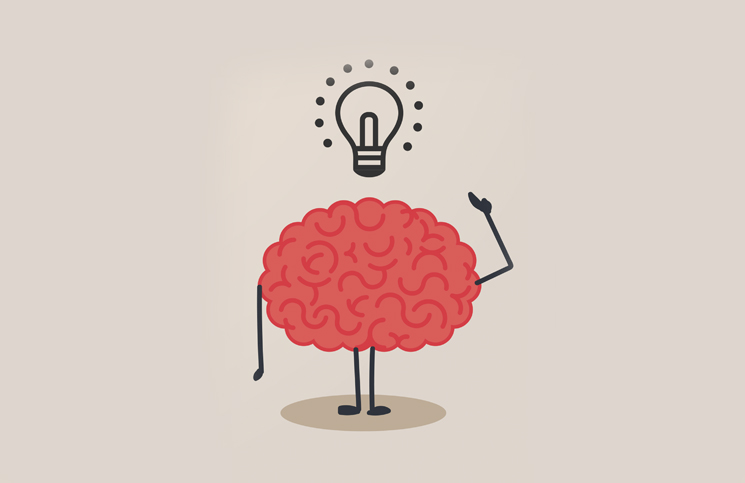Not all memories are treated equally. A memory bias is a cognitive bias that either enhances or impairs the recall of a memory (either the chances that the memory will be recalled at all, or the amount of time it takes for it to be recalled, or both), or that alters the content of a reported memory. There are many different types of memory biases, some that tend to serve you in positive ways and others that tend to get you in trouble. All of them affect your story and the way you remember it and retell it.
Positive Memory Biases
1. Remembering the past as having been better than it really was, is an example of rosy retrospection bias.
2. Remember the path taken or choices made as being better than those you did not, this is called the Choice-supportive bias.
3. Mistaking a memory for something you imagined is a memory bias of cryptomnesia or a false memory. Fiction can be fun and we can all live in our heads a bit too much. This can equally work against us.
4. Recalling the past in a self-serving manner, like the fish you caught as bigger than it was, the grades you received were higher than they were, or how high or far you jumped on the track team in college as better than they really were; these are all examples of egocentric bias.
5. Feelings associated with negative memories fade away more quickly than the feelings associated with positive experiences. This is referred to as a fading affect bias. This is the “let’s do that again” reaction that may recall the fun aspects of an event like the glory of a long race, the excitement of a wild night, while forgetting the negative parts.
6. Things you find humorous are more easily remembered than the boring and mundane. This is an example of the memory bias called the Humor effect. This is why you can vividly remember a good laugh over a boring but important lecture. How you feel and enjoy a moment affects how you remember it.
7. Over time, as the details of an experience slip your mind, the events change in the retelling of the recollection, certain details may be crystal clear while others are exaggerated and together this exaggerates the relational details of the experience. This is said to be due to a bias of Leveling and Sharpening. This isn’t all bad news, after all, like a fine wine, some stories get better with age. The flavor certainly changes with the frequency and time that you share it as well.
8. Older adults favor positive over negative information in their memories is an example of the Positivity effect. This may influence you to be more susceptible to scams when you receive email about unclaimed inheritance from the prince of Nigeria, but it can also help you maintain a rosy colored outlook that will support a vibrant and highly productive life.
9. If you’re in a good mood, you’ll remember other events and experiences where you had a similar mood. This is an example of mood congruent memory bias. Which memories do you want to tap into to fuel your day? Which do you believe will motivate and drive you to more productivity and higher performance?
Typical Troublemaker Biases
10. Remembering your past attitudes and behavior as resembling your current attitudes and behavior is called a consistency bias.
11. After putting in an effort to change or advance, remembering your past performance as more difficult than it actually was is called a change bias.
12. Remembering something as true because you’ve heard it somewhere else before from someone else before is an example of the Illusion-of-truth effect. You may perceive it as truth without validating the information. A great example of this are the many urban legends and celebrity myths that persist throughout society today. When you inaccurately remember the relationship between two moments, this is due to a bias called Illusory correlation.
Biases That We Take To Work & Beyond
13. It’s easier to remember where you put your car keys if your in the right area. It’s easier for witnesses to recall events if they stay at the scene. If you are removed from the context of an event, it’s harder to remember accurately. This is an example of the Context effect. You are better at remembering work related information while at work and home related events when at home.
14. You are better at remembering statements and/or information that you have made or created over those that other people make/create due to the Self-generation effect.
15. The tendency to forget information you can easily find online (and that’s everything these days) is said to be the result of the Google effect.
16. The Homer Simpson forehead slapping, “Doh” moments where you reflect on your memory and past events seem so predictable, avoidable, are examples of the Hindsight bias. This bias is also known as the “I-knew-it-all-along” effect.
17. Different methods you use to retain information have varying levels of effectiveness. This is an example of the levels-of-processing effect.
18. A small percentage of items on a long list are remembered but the longer the list, the more total items you’ll remember due to the list-length effect.
19. Reviewing Memorized testing material frequently improves your ability to remember things in general. This is known as testing effect.
20. People perceive an experience as the sum of it’s average at it’s peak (e.g. really good or really bad) and how it ended. This bias is known as the peak-end effect. Recollection example: It was fun until the power went out and the dinosaurs escaped and almost ate us. This bias can cause small wins/positive moments to go undocumented and could cause you miss out on more momentum.
21. If you see an item on a list and hear it spoken out loud we are more likely to remember it. If you see something in it’s written form vs. hearing it spoken aloud, you will be less likely to remember it. This is an example of the modality effect.
22. Misinformation affects your recollection of events as well. If you are handed an “official report” on an event you participated in your experienced, the information in the report can affect your own account of the event. This is known as misinformation effect. A conspiracy theorist might think of it as the Men In Black effect, the story you’re told to make you feel confused and cover-up what really happened. In the work place, when an employee quits, management and human resources often spin different stories
about how events occurred.
23. Those moments when you confuse which actor or character said a famous line or you confuse names with faces. Or perhaps you remember you know something but forget the source the”why” or “where” you know it from. These are examples of
confusion induced bias is an example of misattribution.
24. You remember things that persist in our head such as recurring nightmares and dreams. This is a bias of persistence.
25. Illustrated concepts, those captured via pictures are much more likely to be remembered than those presented in written form. This is due to the picture superiority effect. You are hard wired to experience things visually. This explains why you can recite every Star Wars movie or recall every scene of The Princess Bride verbatim, but forget text from your chemistry book back in your high school days.
26. There is a tendency to remember things that you perceive that you are good at, or better than others at, and you also remember things that you are bad at, are less than average. You can thank and curse the placement bias for this phenomenon.
27. You are more likely to remember items at the end of a list, followed by the beginning, and lastly middle. The items in the middle of the list are least likely to be remembered. This is a combination of the biases of Primacy effect, Recency effect & Serial position effect.
28. Things that seem overly complicated or difficult are harder to remember. This is an example of the processing difficulty effect. If you perceive remembering something as easy or very possible, you’ll have an easier time remembering it. Perception counts!
29. Remembering the glory days of adolescence and early adulthood is said to be an example of the reminiscence bump. Though society today may frown upon re-living the glory days, it doesn’t mean you should stop celebrating them and using them as footholds to help you climb to new heights and future victories.
30. Self-serving bias is when you perceive yourself as responsible for all of the good outcomes but conveniently not responsible for any of the bad outcomes.
31. Source Confusion– misattributing the source of a memory, e.g. misremembering that one saw an event personally when actually it was seen on television.
32. Spacing effect: that information is better recalled if exposure to it is repeated over a longer span of time.
33. Stereotypical bias: memory distorted towards stereotypes, e.g. “black-sounding” names being misremembered as names of criminals.
34. Telescoping effect: the tendency to displace recent events backward in time and remote events forward in time, so that recent events appear more remote, and remote events, more recent.
35. Tip of the tongue-When you are able to recall parts of an event or related information, but can’t recall the whole thing.This is thought to be an example of “blocking” where multiple similar memories are being recalled and interfere with each other. This is called tip of the tongue phenomenon.
36. The “gist” of what someone has said is better remembered than the verbatim wording. This is called the Verbatim effect.
37. Remembering an item that sticks out is more compared to other items is an example of the Von Restorff effect. A list of power tools with the word “banana” in there will likely earn attention and a spot in your memory.
38. The tendency to remember projects or tasks that are incomplete or were interrupted vs. remembering completed tasks is an example of the Zeigarnik effect.
Bottom Line: Do what you must to love your story and use every scar, every wrinkle and moment to power your present.





0 Comments